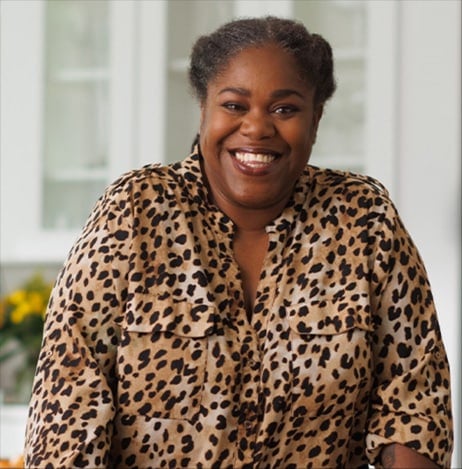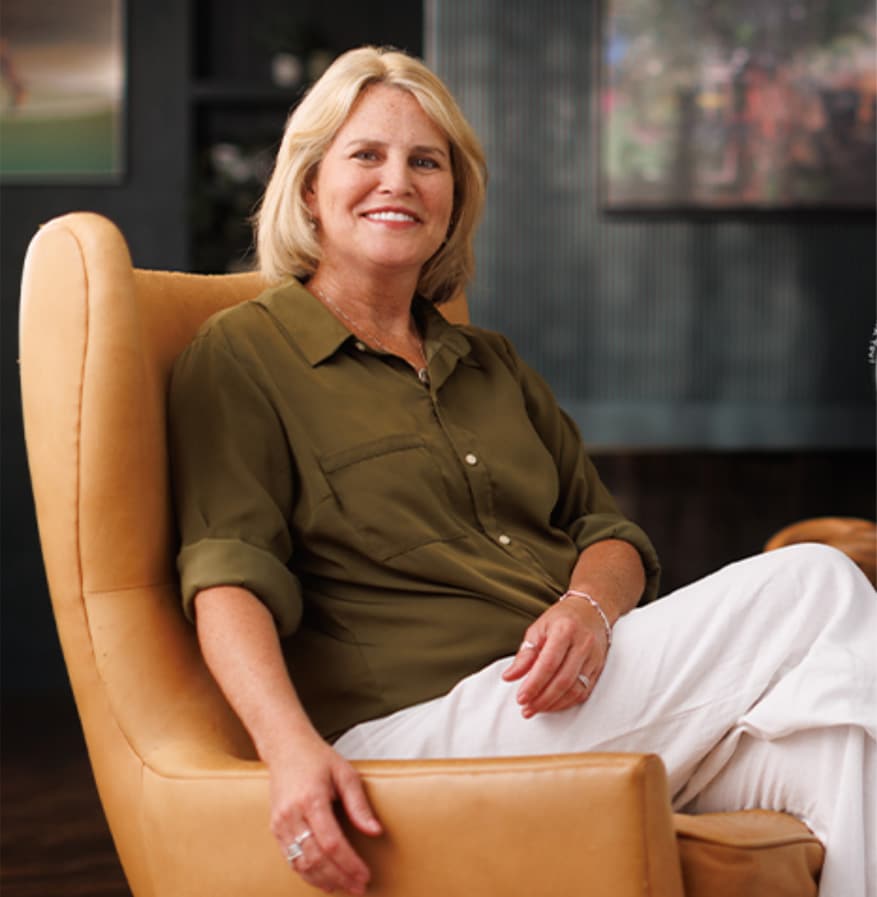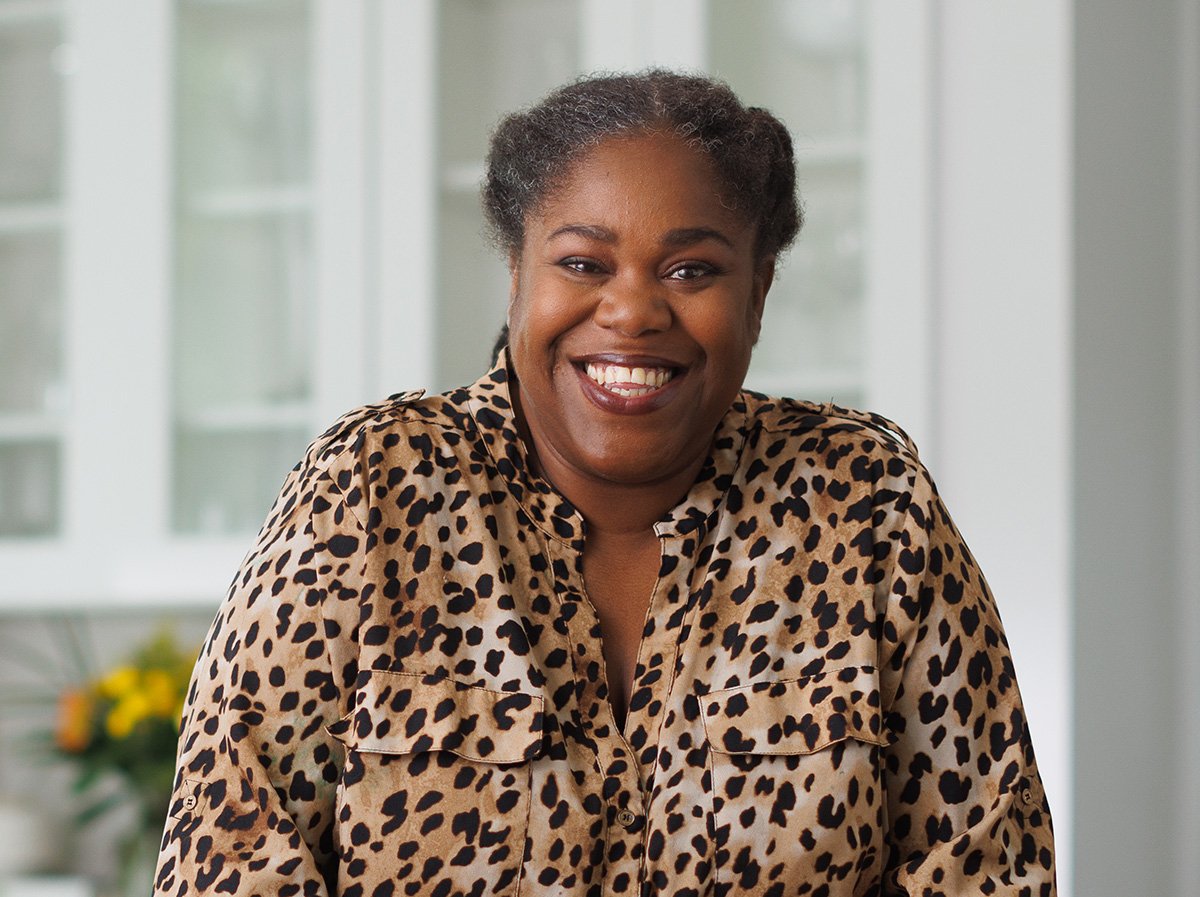From simple displays of kindness to extraordinary acts of care, The Real Story highlights the critical work hospitals do every day to care for patients and support frontline caregivers.
Hear the important voices that matter on the issues facing hospitals and health care today.
Crystal’s Story

Some 34 million patients receive care in US hospitals each year, but potential reductions in hospital funding that have been proposed by policymakers in Washington, DC are jeopardizing access to that lifesaving treatment. The Federation of American Hospitals is continuing our campaign to tell The Real Story of hospitals through the voices of patients and caregivers – and Crystal Warp is one of those people.
She attributes the seamless coordination and high level of care she received from the dedicated staff at an integrated hospital system with helping her survive and recover from a hemorrhagic stroke.
Crystal’s day started out like any other for this busy mother of three. But by 7:30 am, she sensed something was not right. In addition to an excruciating headache, she recalls the feeling that “everything was just weird.” When the feeling wouldn’t go away, she called on her mother to take her to the hospital.
Crystal credits the triage nurse at HCA Florida Poinciana Hospital in Kissimmee for saving her life.
“She’s the one who noticed that there were things going wrong,” says Crystal. “I truly believe she saved my life because she got the ball rolling faster. I didn’t even think it was so important. I just thought it was a headache.”
Things began to happen quickly. The nurse alerted the ER doctor, and Crystal was rushed to a CT scan. After her scan, a neurologist came to speak with Crystal and deliver the news: She had bleeding in her brain, specifically her basal ganglia, the part of the brain that controls speech, motor skills, emotions, and more.
The hospital that provided Crystal’s emergency care was not a trauma unit, so the decision was made to immediately airlift her to another hospital staffed with neurologists and trauma surgeons who were prepared to care for her in case brain surgery became necessary.
Fortunately for Crystal, she was provided quick access to this higher level of care thanks to her medical teams being part of an integrated and coordinated health system.
The priority of hospital integration, or “consolidation,” is to keep hospitals open, preserve or expand patients’ access to care and continue to provide consistent, quality care 24/7 to every patient treated in a hospital. By pursuing mergers and other integration efforts, hospitals are able to maintain their presence in the community, protect patient access to essential and quality care, and provide necessary investment in advanced medical technology. This higher level of care saves
lives…including Crystal’s.
Crystal also benefitted from the smooth transition from intensive critical care to patient care in
the same system. Once her condition was stabilized, she began rehabilitation therapy at HCA Florida Osceola Hospital’s onsite acute inpatient physical rehabilitation center with a care team she, and everyone, refers to as “the dynamic trio.”
“Everything with them works together,” says Crystal. “I had three hours of therapy. So, if I started with speech, my speech would run into my occupational, and vice versa with my PT. It would always rotate, but they all worked together.”
“They motivated me, they pushed me, they made me competitive with it. They made it fun. Even on their days off, they’d tell me to make sure that the report wasn’t that I slacked. So they made it a competitive thing for a competitive person.”
Getting home to her family was the primary motivator for Crystal.
“I’ve got to get this done there. There’s no if and buts,” she told herself. “I need to be home to my kids. I’m the cadet mom. I’m the assistant coach in cheerleading. When my son played football, I was the team mom. My family, they’re my world.”
She found a second family at the hospital: the team that cared so diligently for her.
“Having to have somebody help feed you, having to have somebody clean you. It was just…you’re humbled. Then to have the love, it was just like, even when my family wasn’t there to help me out, they didn’t skip a beat.”
“They made me feel like family. Because even in my lowest of lows, when I couldn’t help myself or clean myself, I cried and apologized a hundred times a day. My care team, they would just say, ‘Don’t be sorry. That’s what we are here for.’”
“My recovery was surprising to everyone, to my family, to my nurses. It was a shock because when I came in, I was paralyzed. I walked out with a walker. I wouldn’t let them take me down in a wheelchair. As soon as they got me with the walker, I was like, ‘Let’s go!’”
Crystal remains forever grateful to each hospital caregiver she encountered, from her arrival in the ER to her discharge 25 days later. She reflects on how lucky she was.
“I think that if the nurse didn’t recognize the stroke, things would be a lot different because, like I tell everybody, my kids are my world. My superpower is being a mom. So not being able to do stuff for my kids, that would’ve destroyed me.”
“If I had to say anything to my care team, it would just be thank you. And I love you. Because they got me home with my kids.”
Paddi’s Story

Hospitals have always focused on providing high-quality care to patients, and investing in the workforce to provide that care. The Federation of American Hospitals is continuing our campaign to tell The Real Story of hospitals through the voices of patients and caregivers – and Paddi Juliano is one of those very special people who has devoted her life to caring passionately about others.
A registered nurse at Lakewood Ranch Medical Center in Florida, Paddi has been working in healthcare for more than 20 years. But she didn’t originally set out on that path.
“My dream ever since I was three years old was to be a Buffalo (New York) firefighter,” says Paddi. After college, that dream did come true. I became a Buffalo firefighter, and it was everything I always thought it would be. It was a fantastic career.”
“I continued my education by getting my EMT license as well, because we did do a lot of medical calls. And so, that’s kind of where I got my niche into healthcare.”
“The only area that I could see myself working in nursing was the emergency department, just because I liked those difficult situations, something different every minute.”
“As a firefighter I’m running into emergent situations, a burning building, trying to save someone’s life. And as an ER nurse, I’m running into an emergent situation, running to do CPR to save someone’s life.”
“I needed those situations where you had to critically think. I’ve always been good at critically thinking. And so, ER was just a natural place for me to start my career. It just evolved through the years and just to be able to help so many people was very rewarding for me.”
After 20 years of ER nursing, Paddi made a transition within her hospital. The shift was partially spurred by the ongoing impact of the pandemic. The change also reflected her natural impulse to lead, to mentor, and to be there for others.
“Ever since COVID, we’ve had different areas that needed help or we just shut down areas, and so I kind of stepped up and played a role to fill those positions,” Paddi reports. “I work in a variety of areas in the hospital now. I’m kind of like a float nurse.”
Paddi still finds it difficult to talk about the pandemic, and the impact it had on her and her team.
“It’s just very hard. It really impacted us quite a bit. We saw so much death. But we were there for each other, so I have so much respect for my coworkers. And our team at the hospital, they just were there for us.”
For her incredible service to her patients and to her team, Paddi was recently recognized as Nurse of the Year at her hospital. She is grateful for the honor, and gives credit to her colleagues.
“It’s really a team that makes that happen and I’m just very honored. I actually am fortunate to work in different areas between techs and nurses and just every staff. The housekeeping staff, they’re part of my team and we just work so well together.”
“And our administration is definitely hands-on. We see them every day walking the halls. They go into patient’s rooms, making sure that the patients are satisfied with their care.”
While Paddi and her team work tirelessly to provide excellent care to patients, the work is more challenging than ever. Today, hospitals are experiencing shortages of medical technicians, laboratory assistants, nurses, food service, housekeeping, and sanitation staff.
“There are so many challenges in healthcare and nursing especially,” says Paddi. “We have such a shortage now. Just the impact that COVID had, for instance, we’ve lost so many great nurses, and truly it’s the shortage of nurses that really affects us.
“Our team, as with probably every hospital in this country, needs to have more support, needs to have more staff.”
A strong hospital work force is critical to exceptional, lifesaving care. Adequate staffing allows healthcare workers to go above and beyond for their patients. The actions hospitals take today will position them to retain their current workforce and attract new talent into the field.
“We need to really open up education in the healthcare field,” Paddi advises. “We need to educate the public on preventative medicine and taking care of themselves. It becomes a vicious cycle when you don’t have the staff to take care of these higher acuities that we’re seeing.”
But Paddi also sees some reasons to be optimistic. She is dedicated to supporting her team, caring for patients, and mentoring new nurses to help them succeed and love this career the way she does.
“We have so many amazing new graduates coming in to the hospital, into the field. There’s such a need, that people who are interested in healthcare, they will seek it. And as long as we have the education and the educators to do that, it will work out and we’ll be where we need to be.”
“I’d love the public to know that when they do come into a hospital, we are there for you. We will make you comfortable, we’ll make you feel safe. We are your advocate. You come in at your most vulnerable time. Just know that you’ll be safe, and we’ll be there to help you.”
Issues
Workforce
The health care workforce is the backbone of the lifesaving care provided by our nation’s hospitals – from nurses and doctors to food service workers and technicians, all are important.
Unfortunately, hospitals and health systems are experiencing challenging workforce shortages across the country. It’s a worsening situation that could ultimately compromise the ability to provide patients with high quality care – and COVID-19 only made it worse.
FAH members are using a variety of programs to take care of our own caregivers, but we need help.
Policymakers must take actions that incentivize workers to enter the health care field and ensure training opportunities for the next generation so we can continue to meet the rising demand.
Read more about The Real Story of health care workforce.
Hospital Integration
Hospitals and health systems are adapting to deliver higher-quality, more affordable care to patients in an ever-changing health care landscape. Hospital integration is an efficient way to better coordinate patient care, increase access to advanced medical technology, and lower patient costs.
It also expands access to care by ensuring smaller hospitals can continue treating patients in underserved, rural, and vulnerable communities.
The COVID-19 pandemic proved that hospital integration and scale can serve patients and communities during times of dire need. Integrated health care systems showed their mettle in the pandemic as drivers of advancement in care. They were there for patients with the cutting-edge treatments they deserve and expect from hospitals.
Read more about The Real Story of hospital integration benefits.


